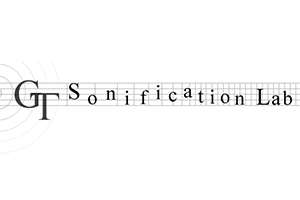In-vehicle technologies such as modern radios, GPS devices, eco-driving displays, and smartphones require users to interact with multiple types of visual-based menus and lists while driving. Modern technologies require users to navigate these screens using physical buttons and touch screens, although recent advances have included the use of steering wheel buttons, turn wheels, Head Up Displays (HUDs) and others. Through design and prototyping of novel menu system interfaces through innovative visual display methods, interaction techniques, and the application of advanced auditory cues to old designs and these novel interfaces, we can attempt to decrease driver distraction, therefore allowing for better driving performance, while also improving search times and decreasing cognitive load on the driver.

The Georgia Tech Sonification Lab is an interdisciplinary research group based in the School of Psychology and theSchool of Interactive Computing at Georgia Tech. Under the direction of Prof. Bruce Walker, the Sonification Lab focuses on the development and evaluation of auditory and multimodal interfaces, and the cognitive, psychophysical and practical aspects of auditory displays, paying particular attention to sonification. Special consideration is paid to Human Factors in the display of information in "complex task environments," such as the human-computer interfaces in cockpits, nuclear powerplants, in-vehicle infotainment displays, and in the space program.
[Random Image of Auditory Interface] Since we specialize in multimodal and auditory interfaces, we often work with people who cannot look at, or cannot see, traditional visual displays. This means we work on a lot of assistive technologies, especially for people with vision impairments. We study ways to enhance wayfinding and mobility, math and science education, entertainment, art, music, and participation in informal learning environments like zoos and aquariums.
The Lab includes students and researchers from all backgrounds, including psychology, computing, HCI, music, engineering, and architecture. Our research projects are collaborative efforts, often including empirical (lab) studies, software and hardware development, field studies, usabilty investigations, and focus group studies.



